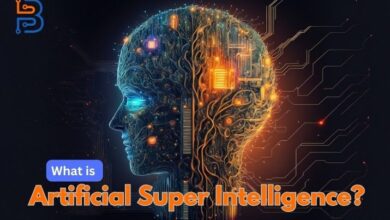AI in Architecture- Ethical Implications & Impacts

Artificial intelligence (AI) has made profound methods and strategies in various industries, including architecture and many more. It also has changed the way we are living before the invention of artificial intelligence. AI is not just a tool to assist professionals but also a catalytical component that enhances the process of innovation. Professionals are allowed to make innovative and comprehensive designs in architecture by pushing boundaries and redefining possibilities. Yet, this technological leap comes with its ethical implications and impacts, raising essential questions about the role of AI. In this article, we will tell you about AI in architecture and its implementation and impacts.
What is Artificial Intelligence?
Artificial Intelligence refers to the simulation of human intelligence in machines that might be programmed to learn and study like people. Its paramount aim is to create systems that can perform tasks that could normally require human intelligence, like visible perception. The field of AI is interdisciplinary, drawing on computer science, mathematics, psychology, linguistics, neuroscience, and different disciplines.
Ethical Implementation of Artificial Intelligence in Architecture
Implementation of a strategy or a tool is essential to be correct and in the right. In this way, businesses or individuals can harness their full potential and gain benefits. Therefore, artificial intelligence’s ethical implementation in architecture aims to harness its power at its peak. Here, you will get to know some of the best ethical practices for implementing AI in architecture:
1- Bias in Design
The AI algorithm is worked on bases: learn from the history and given data. If this data contains biases, the AI can unintentionally memorialize or learn those biases in architectural designs. For example, if the training data predominantly features designs from a particular cultural or socio-economic context. The AI may be biased towards replicating those patterns without diversity and inclusivity. This may not be good for your architectural design, which would not have any innovation and diversity.
2- Loss of Human Touch
The integration of AI in architecture accumulates concerns about the degrading role of human touch and creativity. While AI is capable of generating designs based on data patterns, it may need a more subtle understanding of culture. Also, it may lack contextual factors that humans bring to the design process and bring creativity to their projects. The danger is that architecture could become unnecessary, devoid of the rich tapestry of human experiences.
3- Privacy Concerns
As AI is increasingly used in smart building devices and urban planning, so is the growth in privacy concerns. Smart systems that gather and analyze data about occupants have the potential to influentially infringe on privacy rights. It is important to comprehend that determining a balance between the advantages of AI in optimizing areas and safeguarding individual privacy. However, it is a complicated challenge for architects and policymakers, but it needs to be addressed.
4- Job Displacement
The automation of certain tasks through AI may lead to job displacement for architects and related professionals. While AI can enhance efficiency, there is a risk that it may replace certain roles, particularly those involving routine tasks. The ethical dilemma lies in ensuring a just transition for workers and creating new opportunities for collaboration between humans and AI. In this way, some professionals may lose their existing jobs but get a new opportunity to come with the change. They may get a higher salary than before if they contribute to the learning process.

Impacts of AI in Architecture
When AI is implemented in architecture with its full potential and accurately, it may provide better designs than humans. These designs may be practically perfect, but they still need some human touch. Here, you will get to know the impacts of AI in architecture:
1- Design Optimization and Innovation
AI has the power to revolutionize the design process by quickly generating and evaluating numerous design options. This not only accelerates the design phase but also opens up possibilities that need to be noticed by traditional methods. AI algorithms can analyze vast datasets to inform design decisions, leading to more optimized and innovative solutions. In this way, businesses and architects may have different insights about their views and try to polish their designs.
2- Sustainability and Energy Efficiency
AI plays a crucial role in enhancing the sustainability of architectural projects. By analyzing environmental data, AI is able to optimize building designs for energy efficiency. It also considers factors such as sunlight exposure, wind patterns, and material sustainability. This results in structures that are not only aesthetically pleasing but also environmentally responsible. Architects will be able to have some environmental insights about their sight and structure their designs accordingly.
3- Urban Planning and Smart Cities
AI is instrumental in developing smart cities by optimizing urban planning processes. AI algorithms are capable of analyzing traffic manners, fuel intake, and different information to design towns that are effective. Moreover, it will be more sustainable and responsive to the residents’ needs and pain points. The challenge lies in ensuring that smart towns are developed with a human centric technique and prioritize inclusivity.
4- Enhanced Collaboration
AI enables collaboration among architects, engineers, and stakeholders by offering real-time information evaluation and simulation. Virtual reality (VR) and augmented reality (AR) technologies, regularly powered utilizing AI, enable specialists to visualize and interact with designs before they may be constructed. This improves conversation, reduces mistakes, and results in more cohesive and well finished projects. Moreover, it allows architects to get better insights into their designs and keep the process of improving designs.
Conclusion
As AI continues to evolve and penetrate the field of architecture, understanding its ethical implications and impacts is essential. It is also essential to strike a balance between the advantages of AI driven design and preserving human centric values. It is because of a challenge that architects, policymakers, and society must collectively address. Ethical considerations should guide the development and deployment of AI in architecture to ensure that it improves the designs. Rather than diminishes the quality of their built environment to get innovation and creativity. In this going way, architects and businesses can get more from the collaboration of humans and AI.






